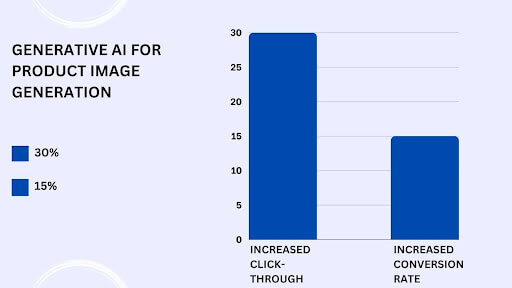 1-800-805-5783
1-800-805-5783 
Artificial intelligence is rapidly evolving, and the generative AI tech stack is emerging as a powerful tool that can transform industries. Generative AI utilizes machine learning algorithms and intense learning models to create entirely new data—realistic images, compelling text formats, or even original musical pieces.
This technology is making waves across various sectors, from revolutionizing product design in e-commerce to accelerating drug discovery in pharmaceutical research.
A recent report by Grand View Research predicts the global generative AI tech stack market will reach a staggering $60.4 billion by 2028, underscoring the urgent need to understand and adopt this rapidly growing technology.
However, building and scaling robust generative AI tech stack systems is complex. It requires a well-defined tech stack that is crucial for the success of any generative AI project.
This underlying infrastructure provides developers and data scientists with the tools and resources to design, train, deploy, and continuously improve their generative AI models.
Understanding and effectively utilizing the generative AI tech stack is a matter of interest and a crucial step for maximizing generative AI’s potential and unlocking its transformative capabilities.
This comprehensive guide is designed for developers, data scientists, and AI enthusiasts eager to delve into the world of generative AI. We’ll examine the essential elements of the generative AI technology stack and outline the vital tools and considerations for building and scaling successful generative AI systems.

Building effective generative AI systems hinges on a robust tech stack, with each component playing a crucial role. Let’s delve into the key elements:
A. Data Acquisition and Preprocessing
B. Machine Learning Frameworks
Building the Foundation: Machine learning frameworks provide the tools and libraries for designing and training neural networks, the core building blocks of generative AI models. Popular choices include:
C. Core Generative AI Models
The generative AI landscape boasts various models, each with its strengths:
D. Scalable Infrastructure (Scaling Generative AI Systems)
E. Evaluation and Monitoring
By understanding these core components of the generative AI tech stack, you can build and scale your own generative AI tech stack systems, unlocking the power of this transformative technology.

The success of any generative AI project is not just a matter of chance, but it hinges on a well-defined roadmap and a robust tech stack.

Generative AI tech stack is rapidly transforming numerous industries beyond healthcare. Here are some compelling examples that showcase the power of this technology:
Revolutionizing E-commerce with Realistic Product Images: A significant challenge for e-commerce platforms is the cost and time associated with professional product photography.
The generative AI application is changing the game. Generative models can analyze existing product images and descriptions to create high-quality, realistic images from various angles and lighting conditions.
A study found that using generative AI for product image generation increased click-through rates by 30% and conversion rates by 15%, highlighting the significant impact on customer engagement and sales.

Overcoming Data Scarcity with Synthetic Datasets: Training powerful AI models often requires massive amounts of real-world data, which can be costly and labor-intensive to gather.
Generative AI tech stack offers a solution by creating synthetic datasets that mimic accurate data. For instance, generative models in the self-driving car industry can create realistic traffic scenarios for training autonomous vehicles.
A report by McKinsey & Company estimates that synthetic data generation using generative AI has the potential to unlock $3 trillion in annual value across various industries by 2030.
Democratizing Content Creation with Personalized Tools: The generative AI tech stack is not just a tool for professionals; it empowers individuals to become content creators.
AI-powered writing assistants can help overcome writer’s block by suggesting relevant phrases and generating drafts based on user prompts. Similarly, generative music platforms allow users to create unique musical compositions by specifying genre, mood, and desired instruments.
A recent study revealed that 60% of marketing professionals already leverage generative AI tools for content creation, demonstrating the growing adoption of this technology for marketing and advertising purposes.
Accelerating Scientific Discovery: The scientific research field also embraces generative AI. In drug discovery, generative models can design and simulate new molecules with desired properties, potentially leading to faster development of life-saving medications.
A generative AI tech stack is also explored in material science to create novel materials with superior properties for aerospace, energy, and construction applications.
An article highlights how a research team used a generative AI tech stack to discover a new type of solar cell material with a predicted 20% increase in efficiency, showcasing the potential of this technology for scientific breakthroughs.
These illustrations only scratch the surface of generative AI’s enormous potential in various industries. As the tech stack continues to evolve and generative models become more sophisticated, we can expect even more transformative applications to emerge in the years to come, sparking excitement and anticipation.

In conclusion, building and scaling generative AI tech stack systems require a robust tech stack encompassing data management, powerful machine learning frameworks, specialized generative models, scalable infrastructure, and continuous monitoring. By leveraging this comprehensive approach, organizations across diverse fields can unlock generative AI’s immense potential.
The impact of generative AI is already being felt across industries. A recent study by Gartner predicts that by 2025, generative AI will be responsible for creating 10% of all synthetic data used to train AI models, highlighting its role in overcoming data scarcity. Additionally, a report by IDC estimates that the global generative AI tech stack market will reach a staggering $11.2 billion by 2026, signifying the rapid adoption of this technology.
Advances in generative AI models and the tech stack will further accelerate their transformative potential. As the tech stack matures, we can expect even more innovative applications in areas like personalized education, climate change mitigation, and autonomous systems. The possibilities are boundless.
This guide’s knowledge and resources strengthen you to join the forefront of this exciting technological revolution. By understanding the generative AI tech stack and its potential applications, you can explore how to leverage this technology within your field and contribute to shaping a future driven by innovation and progress.
1. What’s the core of a generative AI tech stack?
The foundation involves high-quality data for training, powerful machine learning frameworks like TensorFlow or PyTorch, and specialized generative models like GANs or VAEs. Additionally, scalable cloud infrastructure and continuous monitoring are crucial for real-world deployment.
The skills and resources listed in this guide empower you to join the forefront of this exciting technological revolution. By understanding the generative AI tech stack and its potential applications, you can explore how to leverage this technology within your field and contribute to shaping a future driven by innovation and progress.
2. How can generative AI benefit my industry?
Generative AI applications are diverse. It can create realistic product images for e-commerce, generate synthetic data for training other AI models, or even develop personalized content creation tools. From marketing to drug discovery, various sectors are embracing its potential.
3. What are the challenges of building generative AI systems?
Data quality and privacy are key concerns. Ensuring fairness and transparency in generative models is crucial to avoid output bias. Additionally, the computational resources required for training these systems can be significant.
4. What’s the future of generative AI?
The future is bright! Advancements in generative models and the tech stack will lead to even more transformative applications. We can expect to see its impact on personalized education, climate change solutions, and the development of advanced autonomous systems.
5. How can I get started with generative AI?
This guide provides a roadmap! By understanding the core components of the tech stack and exploring successful case studies, you can identify potential applications in your field. Numerous online resources and tutorials can further equip you to build your generative AI system.
[x]cube has been AI-native from the beginning, and we’ve been working with various versions of AI tech for over a decade. For example, we’ve been working with Bert and GPT’s developer interface even before the public release of ChatGPT.
One of our initiatives has significantly improved the OCR scan rate for a complex extraction project. We’ve also been using Gen AI for projects ranging from object recognition to prediction improvement and chat-based interfaces.
Interested in transforming your business with generative AI? Talk to our experts over a FREE consultation today!